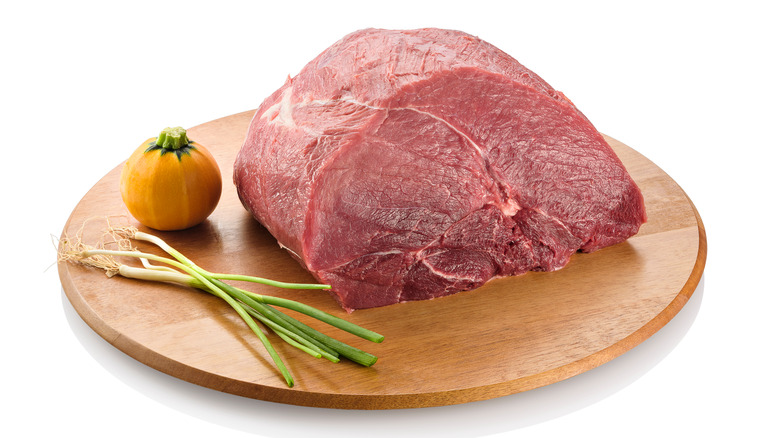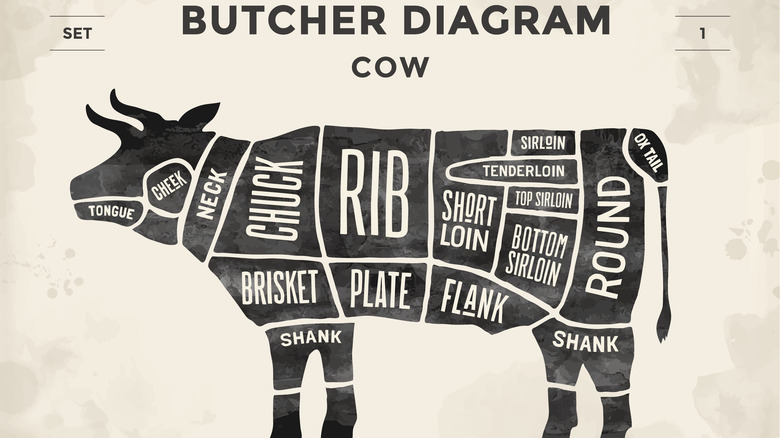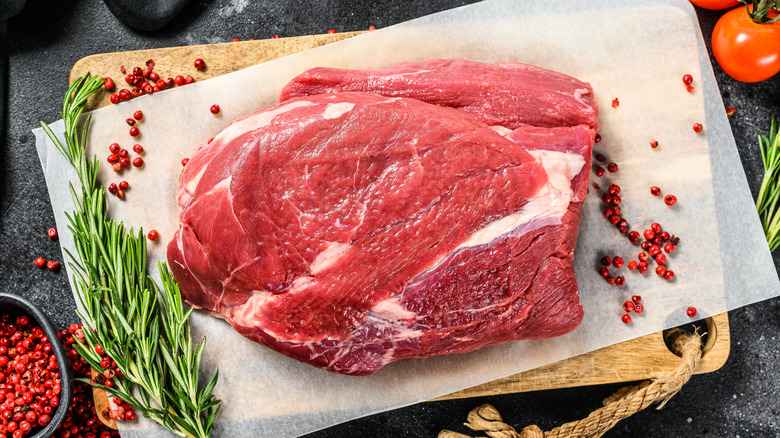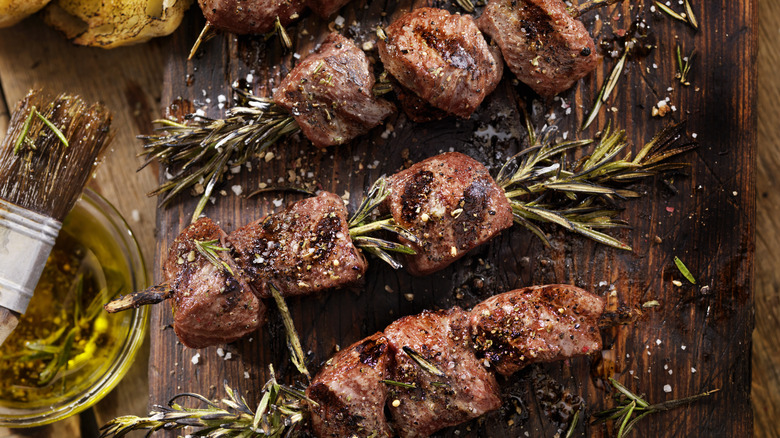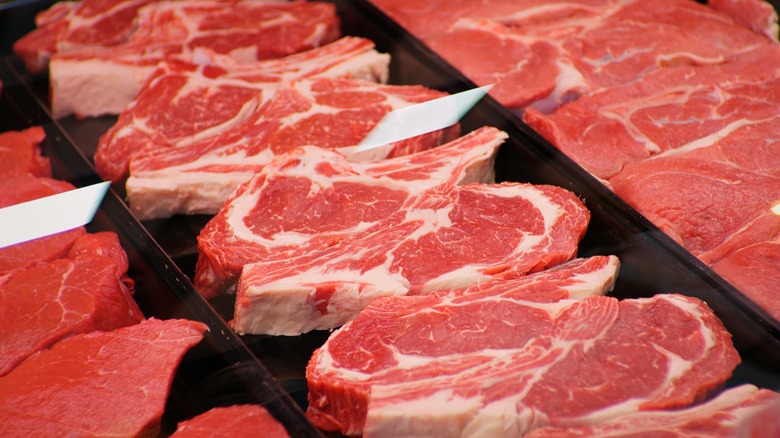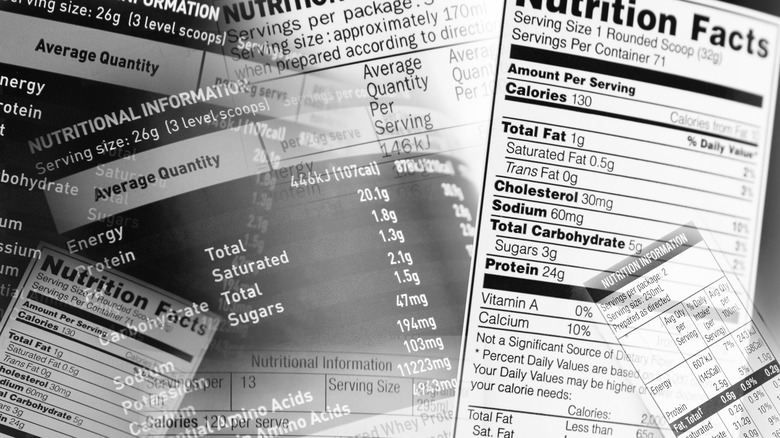What Is Beef Knuckle And How Is It Best Used?
While flashy ingredients can, at times, steal the show, it's often the unsung heroes that elevate your home cooking to new heights. Workhorse vegetables, stalwart spice blends, and underrated cuts of meat require only a little research and individualized attention to become brilliant dishes. And these ingredients are often easy on the wallet, making their inclusion in your repertoire all the more appealing. One such culinary gem is beef knuckle — a budget-friendly cut that every home cook should acquaint themselves with.
No, beef knuckle is not as glamorous as filet or ribeye with their inherent tenderness and rich marbling, respectively. Rather, it is seen as lean and tough, which it can be when treated poorly. That's not to say that beef knuckle requires scads of culinary skill. But by understanding where the cut comes from, how it compares to its neighboring cuts, and how to go about cooking it, you'll be able to impress those you're feeding and open up a whole new world of beefy possibilities.
What part of the cow does beef knuckle come from?
Understanding the true essence of beef knuckle requires us to start at the source: the cow. Beef knuckle is a primal cut of meat that comes from the hind leg of the cow, making it a part of the round.
The hind leg of the cow is a robust, muscular section, and within it lies a series of sub-primal cuts, each with unique characteristics. Beef knuckle, also known as the sirloin tip, is situated right above the hock joint, at the lower end of the round. This location on the cow makes it relatively lean. Beef knuckle is closely related to two other round cuts: top round and bottom round. While these cuts come from the same general area on the cow, they each have their distinct attributes. Understanding these differences is key to unlocking the full potential of beef knuckle in your culinary endeavors.
How does beef knuckle compare to other round cuts?
Now, let's dissect the comparisons between beef knuckle and its round counterparts — top round and bottom round. Known for its leanness, beef knuckle strikes a balance between tenderness and affordability. Its lower fat content makes it a go-to choice for slow-cooking methods, allowing you to lock in moisture and flavor. Positioned just above beef knuckle, top round boasts a bit more fat and marbling, making it a versatile choice for roasts and steaks. The slightly higher fat content of top round contributes to enhanced tenderness and flavor. Situated beneath the beef knuckle, the bottom round is lean and budget-friendly. It's often utilized for pot roasts and slow-cooked dishes, where the meat's inherent toughness transforms into tenderness over a long period of time.
The choice between these cuts hinges on your culinary vision and the dish you plan to prepare. Beef knuckle shines when you desire tenderness without excessive fat, making it an adaptable addition to various recipes.
How to cook beef knuckle
Beef knuckle is a versatile gem that can elevate your culinary repertoire in countless ways. In particular, this cut works well when slow-cooked to perfection as a pot roast. Seasoned generously with herbs, spices, and your choice of aromatics, this cut transforms into a succulent masterpiece. After searing to seal in the juices, let it simmer in a flavorful broth until it becomes fork tender. The result is a comforting pot roast that melts in your mouth.
For a Mediterranean-inspired treat, slice beef knuckle into uniform cubes and marinate them in a blend of olive oil, garlic, lemon juice, and spices. Thread these marinated beauties onto skewers, alternating with colorful bell peppers and onions. Grill them to perfection, and you'll savor the smoky, juicy goodness of beef knuckle kebabs.
If you're in the mood for steak, look no further. Slice beef knuckle into thick steaks, season them to your liking, and sear them in a hot skillet with butter or oil. The result is a delectable beef knuckle steak that's tender and bursting with flavor. Pair it with classic steakhouse sides for a gourmet experience. Likewise, thinly sliced beef knuckle works wonders in Asian stir-fry dishes. The lean nature of this cut makes it perfect for quick cooking methods. Toss it in a hot wok with your favorite vegetables, sauces, and seasonings for a speedy and satisfying meal.
Where to buy beef knuckle
Now that you're eager to experiment with beef knuckle, the next step is securing this savory treasure. You've probably, though, never seen beef knuckle advertised at the store. It is a rather clumsy and potentially-unappetizing name, but as we've covered, this cut is sometimes listed as sirloin cap, so keep on the lookout for that. If you want to ensure you're getting what you're after, here's our advice.
Your local butcher shop is a fantastic resource for obtaining beef knuckle. Skilled butchers possess deep knowledge of various cuts and can offer expert guidance. Don't hesitate to inquire about specific recommendations or request custom cuts tailored to your needs. On a similar note, don't overlook the butcher department at your neighborhood grocery store. Although they may not consistently stock beef knuckle, most grocery store butchers can accommodate special orders. Simply inquire, and they'll likely be delighted to assist in procuring this underrated cut for you.
Of course, in the digital age, numerous online meat purveyors provide high-quality cuts delivered directly to your doorstep. Seek out reputable suppliers renowned for their commitment to sourcing top-tier meat. Many online vendors also furnish comprehensive information about each cut, facilitating your selection process.
Nutritional value of beef knuckle
Beyond its culinary versatility, beef knuckle offers nutritional benefits that may pique your interest. This lean cut is an excellent source of protein, essential vitamins, and minerals, and it is notably low in fat. It is important to know that these nutrients and qualities differ from cow to cow. We always suggest buying the best quality and freshest meat possible. It is also critical that you speak with your doctor or nutritionist about your specific dietary needs and what foods will best serve them.
That said, beef knuckle is a protein powerhouse, aiding in muscle growth, repair, and overall health. It contains essential vitamins such as B-complex vitamins (B2, B6, B12), which play key roles in metabolism and energy production. Beef knuckle provides minerals like iron, zinc, and phosphorous, contributing to immune function, wound healing, and overall well-being. Its minimal fat content makes it a lean protein option suitable for those watching their dietary fat intake. Incorporating beef knuckle into your meals not only delights your taste buds but may also contribute to a well-rounded, nutrient-rich diet.
